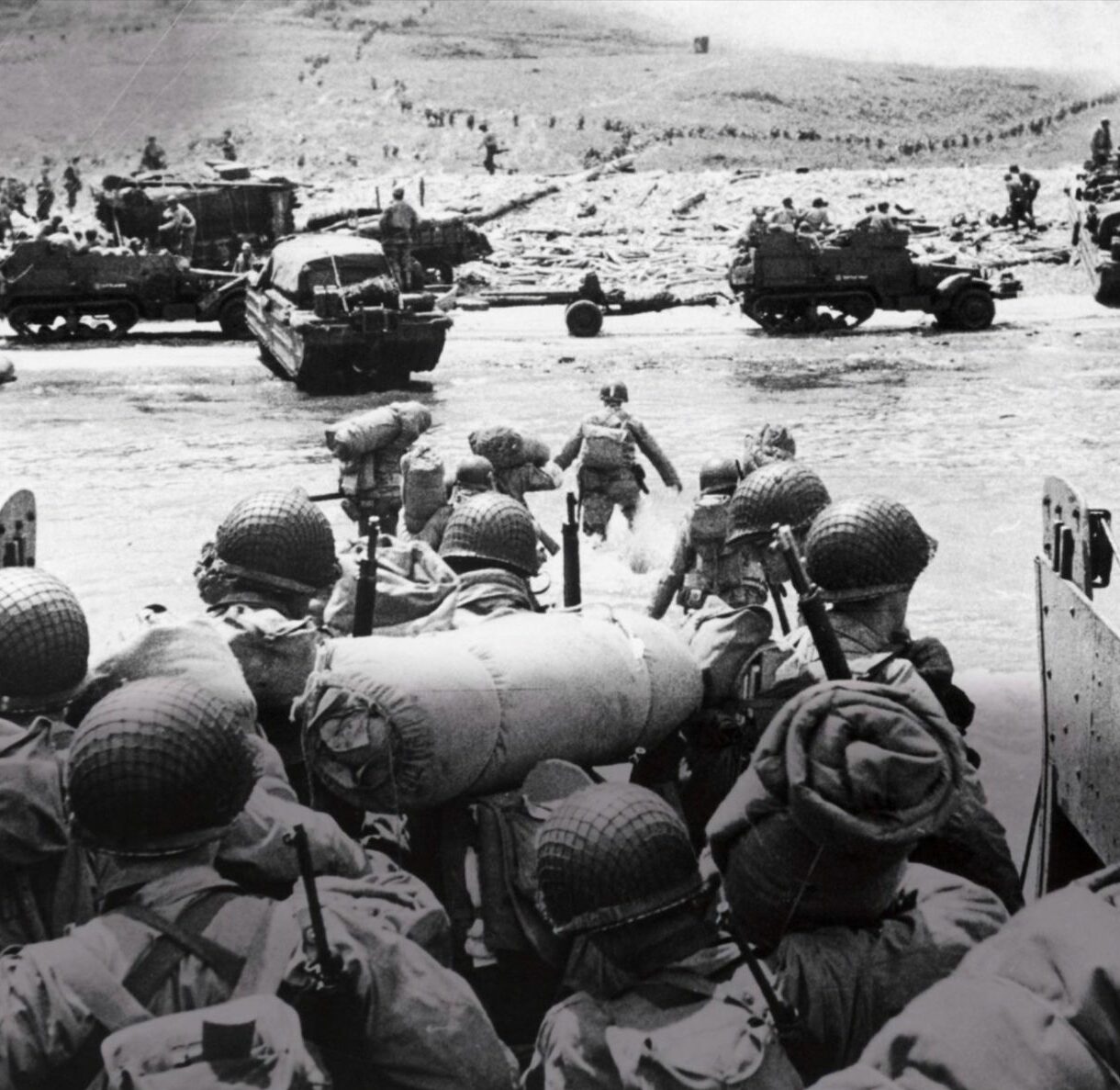FOUCARVILLE IN NORMANDY
EUROPE'S LARGEST GERMAN PRISON CAMP

A PAGE OF HISTORY
On June 6, 1944, the Allied armies landed in France, which had been occupied by the Germans since 1940.
A few days later, the American authorities set up transit camp no. 1 in Foucarville, Normandy; a few months later, it became one of the largest camps for German military prisoners in Europe – Germans, Austrians, Hungarians, etc., all captured under German army uniform: the Continental Central Prisoners of War Enclosure (CCPWE) 19 was created.
Under American command, the CCPWE 19 was set up. CCPWE 19 will see over 100,000 captives pass through its doors, a veritable world outside the world , until February 1946, when it is dissolved. It disappeared without a trace from the landscape.
A museum for history and thinking about peace
The Museum of German War Captivity – the first to be devoted entirely to this subject – aims to raise awareness of a largely unknown story, yet one that was the foundation of the post-1945 era.
- On the German side, through four camps, it evokes the fate of 11 million defeated soldiers and those awaiting them, reflecting the upheaval of an entire society.
- On the Allied side, he examines the paradoxes of wartime captivity in peacetime, used to rebuild victorious countries through prisoner labor.
How do we get out of war and build a lasting peace?
Long relegated to oblivion and shame, this mass captivity raises an essential political question: how can we avoid, after 1945, repeating the mistakes made after 1918? The re-education of prisoners thus becomes a major challenge for the stabilization of the continent.
A museum of history in dialogue with the present
Rooted in the exceptional archives of the Foucarville camp, the museum adopts a transnational and comparative perspective, mirroring three other German prison camps in France, the UK and Poland. The permanent exhibition, focusing on the fate of the defeated, will be extended by temporary exhibitions dealing with other forms of captivity, past or contemporary. This is a museum of the present: explaining the present through the past, but also showing how the present sheds light on our reading of history.
Sensitive to the suffering that Nazism caused in Europe, the project aims to integrate the perception of Nazi crimes into the issue of the end of the war after Germany’s defeat, and the way in which the powers that held the captives resolved it on the scale of the German POW camps.
The re-education of prisoners thus becomes a major challenge for the stabilization of the continent.
Helping us...
If we are to succeed in faithfully writing this still little-known page of European history, we need to complete the collections. We are therefore appealing for your support to help us :
Expand the circle of living witnesses and their direct descendants, ready to testify in writing or orally
Find documents, archives, diaries entries and objects relating to the CCPWE19 camp, depot no. 14 in Douai, depot no. 152 in Saint-Aubagne, the Sosnowiec camp in Poland and the British camp,
Collect any information that would contribute to a better understanding of this subject.
Three generations after the end of the war, when the last witnesses of this period can still pass on the baton, and Europe is once again experiencing war, our project aims to seize a historical moment to explore the captivity of military prisoners in Normandy, and to insert it into a transnational history.
A PROJECT OF INTERNATIONAL SCOPE
Our project is supported by public bodies, major patrons and several French institutions such as
the Service Historique de la Défense (SHD), theÉtablissement de Communication et de Production Audiovisuelle de la Défense (ECPAD) and the Archives départementales du Nord, as well as international archives such as the Bundesarchiv, the Deutsches Tagebucharchiv (DTA), and the International Committee of the Red Cross (ICRC), not forgetting our very active “Cercle des témoins et descendants directs” (German, American and Norman).
Our project is selfless. It will be carried out exclusively by the non-profit Warren J. Kennedy Association.
INFORMATION,
A TESTIMONIAL,
QUESTIONS ABOUT THE PROJECT?
KEY DATES
Opening of transit camp n°1 on June 9, 1944. It soon became a permanent camp - CCWPE19 - to cope with the influx of prisoners. The camp was closed in 1946 and dismantled in 1947.
The Foundation houses the Kennedy collection and all the archives donated to the future museum. It is authorized to collect French, European and international patronage for the future museum.
The beginnings of a museum take shape. An exhaustive study of the local context and the encouragement of local authorities make it possible to envisage the creation of a museum.
Programming study entrusted to Agence Kantara (AMO)
On November 7, the jury selected TRACKS architects, along with a team of scenographers, landscape architects, designers, graphic artists, media specialists, engineers ...
First project sketches. APS (avant-projet sommaire) phase in March; APD (avant-projet définitif) phase in June. Submission of building permit.
Museum construction work
Opening the museum to the public
